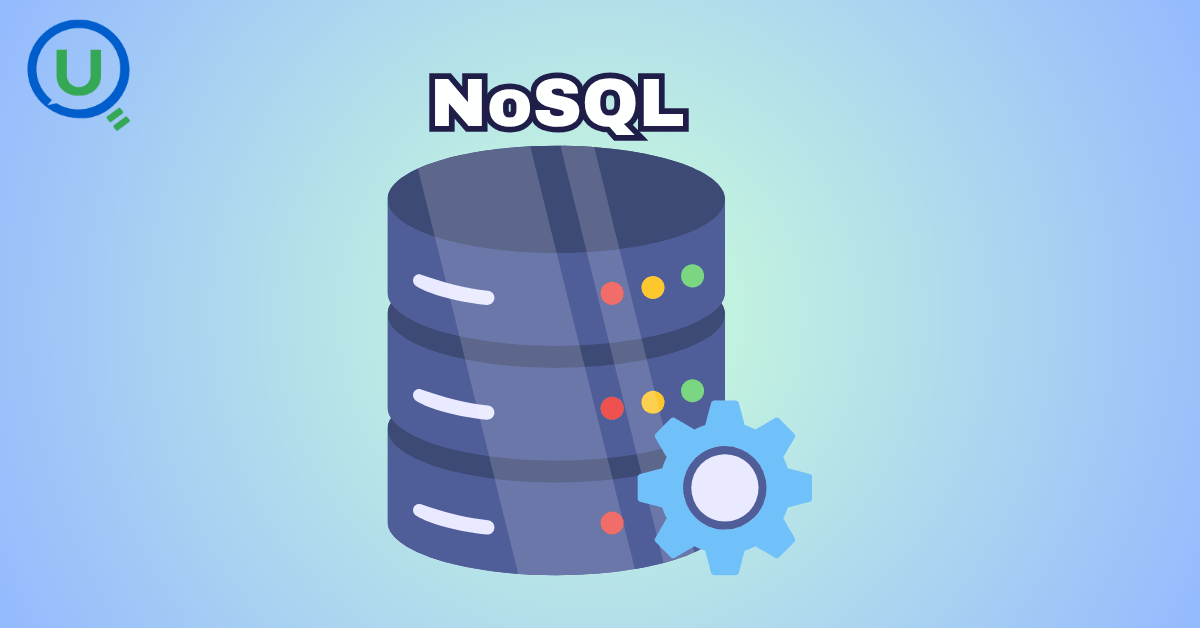Demystifying Namespace Structures

Ready to transform your data strategy with cutting-edge solutions?
GlobalMart, an e-commerce company, faces significant challenges in efficiently managing its ever-growing data and resources within its storage system. As their warehouses, customer base, product catalog, etc. expands, they encounter issues such as naming collisions, resource discoverability, scalability limitations, and reduced manageability. Additionally, analyzing data across multiple stores poses a significant difficulty.
How can an organization overcome these obstacles and improve storage management? The answer to this question is by leveraging the correct namespace.
What is a namespace?
When it comes to storage services, a namespace is like a digital filing cabinet that helps you keep your data organized and easy to find. It's a way to group related resources within a storage account, such as documents, objects, files, or media. Think of it as a neat and structured system for managing your data efficiently.
A storage namespace allows you to partition and isolate different sets of data within a storage account. It acts as a unique identifier for the resources within that namespace. Each storage account can have one or more namespaces, and each namespace can contain multiple containers, blobs, files, or queues.
Using namespaces, you can organize your data based on different criteria, such as application-specific data, user data, or data related to other projects or departments. It provides a logical separation and makes it easier to manage, secure, and control access to different sets of resources within a storage account.
Flat Namespace:
A flat namespace refers to an organizational structure where all resources within a storage account exist at the same level, without any hierarchical organization or grouping.
In a flat namespace, there are no nested containers or folders to organize the resources. All the resources, such as blobs, files, or objects, are placed directly at the root level of the storage account. This means that every resource is given a unique name within the account, and there is no implicit hierarchy or grouping of resources.
When using a flat namespace, resource names must be unique within the storage account, regardless of the type of resource. For example, if you have both a blob and a file with the same name, they cannot coexist in a flat namespace.

Let's consider a data analysis project that involves working with different datasets:
Entities: US_Sales, US_Customers, Europe_Sales, Europe_Customers, Product
Usage: US_Sales.aggregate(...), Europe_Customer.filter(...), Product.join(...)
In this case, all the datasets exist in a flat namespace. Data analysts can directly access and manipulate the datasets without any hierarchical structure.
Advantages of Flat Namespace:
Simplicity and ease of management.
Easy resource discovery and access.
Greater flexibility in resource naming and organization.
Disadvantages of Flat Namespace:
Increased risk of naming collisions.
Lack of logical organization and hierarchy.
Reduced scalability for a large number of resources.
Decreased readability of resource names.
Potential performance issues in resource searching and access.
Hierarchical Namespace:
A hierarchical namespace refers to an organizational structure that allows for the organization and grouping of resources in a hierarchical manner within a storage account. It introduces the concept of containers, folders, directories, or similar constructs to create a hierarchical organization of resources.
Resources are organized into a tree-like structure in a hierarchical namespace, where each level represents a container, folder, or directory. This hierarchy enables the grouping and logical organization of related resources, making it easier to manage and navigate through the data.
Hierarchical namespaces offer several benefits, including easier management of large amounts of data, improved organization and navigation, efficient querying and filtering of resources, and enhanced access control and permissions management. It allows for better scalability, performance, and advanced features like a directory listing, recursive operations, and hierarchical querying.

Now, imagine the same data analysis project with a different structure:
Entities: US.Sales, Europe.Sales, US.Customers, Europe.Customers, Products
Usage: US.Sales. aggregate(...), Europe.Customers.filter(...), Product.join(...)
Here, the datasets are organized hierarchically under the Data category. This structure provides better organization and readability for data analysts. They can easily understand the relationships between datasets and access them within the hierarchical structure. For example, aggregating sales data is done through Data.Sales.aggregate(...). This approach promotes a modular and structured design, making navigating and managing datasets easier as the project scales.
Advantages of Hierarchical Namespace:
Clear organization and structure.
Reduced naming collisions.
Scalability for a large number of resources.
Improved readability and understanding of resource names.
Disadvantages of Hierarchical Namespace:
Increased complexity.
Limited flexibility in resource naming and organization.
Overall, the choice between a flat or hierarchical namespace depends on the complexity and scale of the data analysis project. While a flat namespace may be suitable for small-scale analyses, a hierarchical namespace offers better organization and scalability for more extensive and more intricate datasets.
Ready to Experience the Future of Data?
You Might Also Like

Snowflake recommends 100–250 MB files for optimal loading, but why? What happens when you load one large file versus splitting it into smaller chunks? I tested this with real data, and the results were surprising. Click to discover how this simple change can drastically improve loading performance.

Master the bronze layer foundation of medallion architecture with COPY INTO - the command that handles incremental ingestion and schema evolution automatically. No more duplicate data, no more broken pipelines when new columns arrive. Your complete guide to production-ready raw data ingestion

Learn Git and GitHub step by step with this complete guide. From Git basics to branching, merging, push, pull, and resolving merge conflicts—this tutorial helps beginners and developers collaborate like pros.

Discover how data management, governance, and security work together—just like your favorite food delivery app. Learn why these three pillars turn raw data into trusted insights, ensuring trust, compliance, and business growth.

A simple request to automate Google feedback forms turned into a technical adventure. From API roadblocks to a smart Google Apps Script pivot, discover how we built a seamless system that cut form creation time from 20 minutes to just 2.

Step-by-step journey of setting up end-to-end AKS monitoring with dashboards, alerts, workbooks, and real-world validations on Azure Kubernetes Service.

My learning experience tracing how an app works when browser is refreshed

This is the first in a five-part series detailing my experience implementing advanced data engineering solutions with Databricks on Google Cloud Platform. The series covers schema evolution, incremental loading, and orchestration of a robust ELT pipeline.

Discover the 7 major stages of the data engineering lifecycle, from data collection to storage and analysis. Learn the key processes, tools, and best practices that ensure a seamless and efficient data flow, supporting scalable and reliable data systems.

This blog is troubleshooting adventure which navigates networking quirks, uncovers why cluster couldn’t reach PyPI, and find the real fix—without starting from scratch.

Explore query scanning can be optimized from 9.78 MB down to just 3.95 MB using table partitioning. And how to use partitioning, how to decide the right strategy, and the impact it can have on performance and costs.

Dive deeper into query design, optimization techniques, and practical takeaways for BigQuery users.

Wondering when to use a stored procedure vs. a function in SQL? This blog simplifies the differences and helps you choose the right tool for efficient database management and optimized queries.

This blog talks about the Power Law statistical distribution and how it explains content virality

Discover how BigQuery Omni and BigLake break down data silos, enabling seamless multi-cloud analytics and cost-efficient insights without data movement.

In this article we'll build a motivation towards learning computer vision by solving a real world problem by hand along with assistance with chatGPT

This blog explains how Apache Airflow orchestrates tasks like a conductor leading an orchestra, ensuring smooth and efficient workflow management. Using a fun Romeo and Juliet analogy, it shows how Airflow handles timing, dependencies, and errors.

The blog underscores how snapshots and Point-in-Time Restore (PITR) are essential for data protection, offering a universal, cost-effective solution with applications in disaster recovery, testing, and compliance.

The blog contains the journey of ChatGPT, and what are the limitations of ChatGPT, due to which Langchain came into the picture to overcome the limitations and help us to create applications that can solve our real-time queries

This blog simplifies the complex world of data management by exploring two pivotal concepts: Data Lakes and Data Warehouses.

An account of experience gained by Enqurious team as a result of guiding our key clients in achieving a 100% success rate at certifications

demystifying the concepts of IaaS, PaaS, and SaaS with Microsoft Azure examples

Discover how Azure Data Factory serves as the ultimate tool for data professionals, simplifying and automating data processes

Revolutionizing e-commerce with Azure Cosmos DB, enhancing data management, personalizing recommendations, real-time responsiveness, and gaining valuable insights.

Highlights the benefits and applications of various NoSQL database types, illustrating how they have revolutionized data management for modern businesses.

This blog delves into the capabilities of Calendar Events Automation using App Script.

Dive into the fundamental concepts and phases of ETL, learning how to extract valuable data, transform it into actionable insights, and load it seamlessly into your systems.

An easy to follow guide prepared based on our experience with upskilling thousands of learners in Data Literacy

Teaching a Robot to Recognize Pastries with Neural Networks and artificial intelligence (AI)

Figuring out how Cloud help reduce the Total Cost of Ownership of the IT infrastructure

Understand the circumstances which force organizations to start thinking about migration their business to cloud
